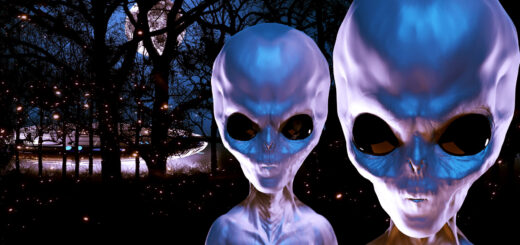How UFOs Work

On December 9, 1965, hundreds of witnesses saw a strange object crash into the woods in Kecksburg, Pennsylvania … Early in the morning of December 27, 1980, two U.S. Air Force security patrolmen saw a glowing metallic object hovering above Rendlesham Forest in Suffolk, England … Between 1989 and 1990, hundreds of enormous triangular objects were reported in the skies over Belgium … On January 5, 2000, a business owner and several police officers in Illinois saw a huge, brightly lit object dart across the sky …
Thousands of people around the world have reported occurrences just like these — strange, unidentified flying craft that hover in the air or land on the ground. Are these unidentified flying objects — UFOs, as they’re called — alien spaceships visiting us from faraway planets? Or are they simply high-tech military craft, weather balloons or other easily explainable sightings?
This article looks into the myths and mysteries surrounding UFOs, highlighting the discoveries researchers have made so far and the great unknown that still surrounds these strange flying objects.
What are UFOs?
At around the middle of the 20th century, the U.S. Air Force coined the phrase “UFO” as a catchall term for any “unidentified flying object” — unknown lights and discs spotted in the sky. But among ufologists (UFO enthusiasts and researchers), the term has become synonymous with alien spacecraft.
The reported perception of an object or light seen in the sky or upon the land the appearance, trajectory, and general dynamic and luminescent behavior of which do not suggest a logical, conventional explanation and which is not only mystifying to the original percipients but remains unidentified after close scrutiny of all available evidence by persons who are technically capable of making a common sense identification, if one is possible.
UFOs are more often than not revealed to be something very well known — a weather balloon or airplane lights, for example. But in anywhere from 5 to 10 percent of UFO cases, the object remains a mystery.
UFO sightings have been associated with so-called alien abductions, in which people say that they have been transported to an alien spacecraft and subjected to a variety of physical examinations — even alien cross-breeding experiments.
UFOs have also been linked to crop circles, strange and sometimes unexplained patterns that form overnight in fields.
UFOs have been blamed for animal mutilations — horses, goats, cows, deer and other creatures found drained of blood and with their organs removed. The alien theory arises because typically no tracks are found around the animal to indicate that a human was responsible.
During a UFO sighting, strange phenomena are often reported, such as radio and TV interference or car-ignition failure. Many UFOs leave strange calling cards, such as indentations in the ground; burned or flattened vegetation; spider-web-like strings that hang from telephone poles and trees and disintegrate at the touch; and chunks of unidentifiable debris.
So, are they really alien spacecraft piloted by extraterrestrial beings, or are they terrestrial objects that just haven’t been properly identified? The question has raised a good bit of controversy, pitting those who believe in UFOs against those who say they need to see more scientific UFO evidence.
Surveys show that the overwhelming majority of Americans believe that intelligent life exists elsewhere in the universe. More than 60 percent of respondents to a 1997 CNN poll said they believe aliens have contacted humans; approximately 50 percent said they think aliens have abducted humans; and 80 percent believe the government is hiding something about alien contact.
People who claim to have seen UFOs are confident that what they’ve seen is real. They say these alien beings have come to Earth to study the human race, create a new hybrid species or simply to communicate with humans.
But skeptics say there is a startling lack of real scientific evidence to prove — or disprove — the UFO phenomenon. They argue that the majority of UFOs turn out to be identifiable phenomena — everything from weather balloons to meteor showers to hoaxes.
THE DRAKE EQUATION
Does intelligent life exist on other planets? In 1961, Dr. Frank Drake, president of the SETI (Search for Extraterrestrial Intelligence) Institute, developed a mathematical equation to determine the probability. His equation is based on seven variables, including the number of stars in our galaxy and the percentage of stars that have planetary systems. When all seven variables are multiplied, the answer is the potential number of civilizations out there that might be able to communicate with us.
See The Active Mind: SETI: The Drake Equation to learn more.



 Creators of mankind
Creators of mankind Description of “Tall white aliens”
Description of “Tall white aliens” Where they came from?
Where they came from? About hostile civilizations
About hostile civilizations The war for the Earth
The war for the Earth “Tall white aliens” about eternal life
“Tall white aliens” about eternal life Video: “Nordic aliens”
Video: “Nordic aliens” Aliens
Aliens Alien encounters
Alien encounters The aliens base
The aliens base UFO
UFO Technology UFO
Technology UFO Underground civilization
Underground civilization Ancient alien artifacts
Ancient alien artifacts Military and UFO
Military and UFO Mysteries and hypotheses
Mysteries and hypotheses Scientific facts
Scientific facts


















